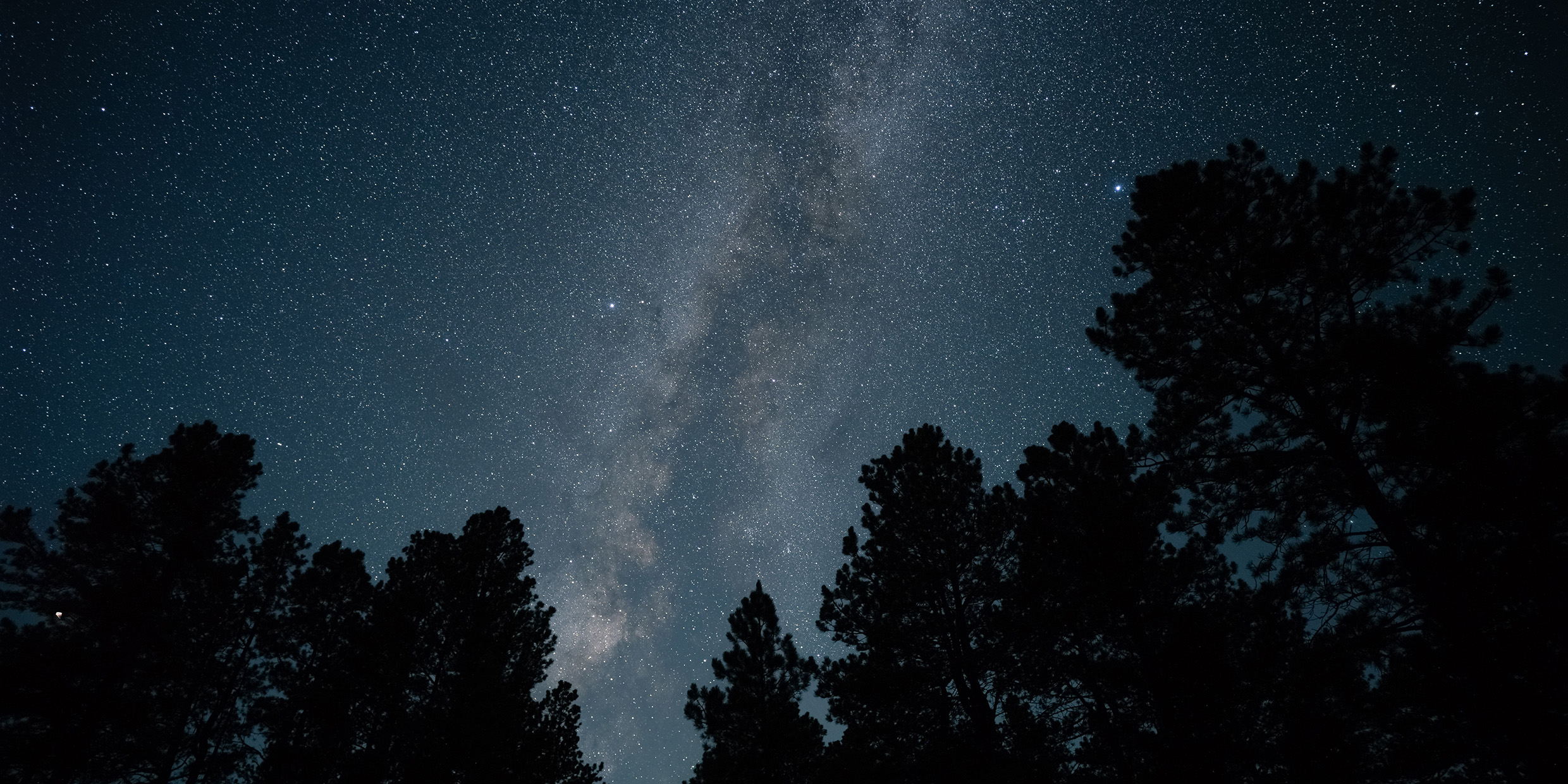Originally published 15 April 1991
Looking for dark, starry skies?
Drive 60 miles east out of Santa Fe, New Mexico. Get off the interstate at Las Vegas (not the neon-lit casino town, but a place with fewer lights and considerably more charm).
Head north on desolate state highway 518. At mile marker 9, turn left on a dirt road that runs square into the Sangre de Cristo Mountains. Dip through a cleft in the first ridge, and you’ve arrived at Star Hill Inn.
Phil or Blair Mahon will show you to your cabin, one of five tucked among the ponderosa pines. All the modern conveniences, sure, but also a basket of firewood next to a red clay stove, Navaho wall-hangings, Western-style furnishings and decorations hand-crafted by Blair herself. A porch with comfy chairs and a rail to prop your feet on.
A little bit of heaven?
Nope, a whole lot of heaven. A heaven that arches from horizon to horizon. Star Hill Inn exists for amateur astronomers, for stargazers, for lovers of the night.
The Mahons chose this valley for its dark skies, far from city lights, and, at 7,200 feet above sea level, just that little bit closer to the stars. In a clearing set well away from the cabins they have provided an observing deck where guests can set up their telescopes, or use binoculars or telescopes belonging to the inn. There is a library close at hand, stocked with star maps, cookies, coffee, and tea.
There are something like 300,000 amateur astronomers in the United States, and most of them, like me, live near city lights. It is for us urban and suburban folk that Star Hill Inn was invented — as a place to experience the night as it was before we erased the stars with automobile exhaust and artificial light.
Stargazer’s extravaganza
Recently, I spent four nights at Star Hill Inn. The first two were cloudy (your cabin does not come with a guarantee of stars). The third night was spectacularly clear, a sleepless, dusk-to-dawn stargazing extravaganza. The fourth night was spent recovering from night number three.
During that one perfect starry night I observed 107 Messier objects.
Back in the late 18th century, a French comet hunter names Charles Messier compiled a catalog of fuzzy lights in the night sky, lights too blurry to be stars, and, except for their fixed positions, easily mistaken for comets. He had no idea what these light blurs were. Most of them were visible only with a telescope.
Today we know the objects in Messier’s catalog are a mixed bag — galaxies, star clusters, remnants of exploded stars, and gaseous nebulas where stars are born. Altogether, 110 objects are recognized on Messier’s list. We know them by their “M” numbers.
It turns out that there is one week each year, around the time of the spring equinox, when it is theoretically possible to see all 110 Messier objects in a single night. Some objects must be caught in the evening twilight, others in the morning dawn. One object, the globular cluster M30, in nearly impossible to see, rising only just before the sun.
My stay coincided with the week of the equinox. Furthermore, the moon was new and, therefore, the sky was especially dark. Perfect conditions for an all-night Messier marathon. I saw all but three of the Messier objects. I wish I could say I did it on my own, but I lack the skill. The guy who found those 107 faint blurs of light was fellow guest Tom Lorenzin, a talented amateur astronomer from Davidson, North Carolina. Each time he found an object, he allowed me a peek through the telescope.
A heavenly feast
What we saw that night was often more than the nondescript blurs of light observed by Messier. Lorenzin was using a 17-inch Dobsonian reflector telescope, and instrument capable of revealing the true personality of many Messier objects.
A sampler:
M1, the Crab Nebula in Taurus, the shredded remnants of a star, the aftermath of a supernova.
M57, the Ring Nebula in Lyra, a wispy smoke ring of exploded star stuff.
M42, the Great Nebula in Orion, a luminous nursery of new stars.
M13, the gorgeous ball-shaped cluster of stars in Hercules, one of dozens of globular clusters that surround the Milky Way Galaxy.
M31, the Great Galaxy in Andromeda, sister galaxy of the Milky Way, a pinwheel of a trillion stars.
M81 to M91, a midnight run of galaxies, millions or tens-of-millions of light-years distant, each of them a universe of stars.
Messier’s list of 110 celestial lights was only the main course of that starry feast. Hors d’oeuvres included satellites, meteors, the zodiacal light, a star-streaked Milky Way, and a parade of planets. Dessert was a sunrise welcomed by chorusing birds.
The Mahons presided over all, making us feel at home, offering nebulas and galaxies the way some innkeepers offer chocolates or shoeshines. No television at Star Hill Inn; instead, a deep black New Mexico sky inviting all-night communion with the cosmos.
Unfortunately, at the time of this republication, the Star Hill Inn is no longer in business. ‑Ed.



